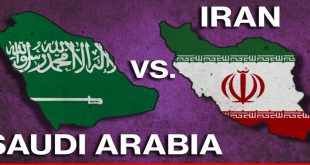Iran and a group of 6-states led through the US reached a historic agreement on July 14, 2015 considerably limit Tehran’s nuclear ability for greater than a decade in return for lifting global oil and monetary sanctions.
The agreement culminates 20-month of negotiations on a deal that US President B. Obama had long sought as the greatest diplomatic attainment of his government. Whether it portends a fresh relationship between Iran and US after eras of coup, hostage-taking, terrorism and sanctions stays a bigger question.
But unfortunately there is no any benefit from Iran-US weapon deal to Iran-Pakistan (IP) gas pipeline project. The US$7.5 billion Iran-Pakistan pipeline was inaugurated with great fanfare during March 2013 but the pipeline immediately hit quicksand in the form of global sanctions on Iran, which meant cash-strapped Pakistan struggled to grow the money to build its side. In the starting of the month US has clearly said that IP-gas pipeline project would not yet advantage from the nuclear deal that may ease economic sanctions on Iran.
The country praised the contract because it will open the doors for economic cooperation with Iran, counting the construction of a gas pipeline to bring natural gas for the South Asian nation. US also said that the lifting of sanctions for commercial agreements with Tehran had not commenced yet. US doesn’t believe Tehran open for business yet, and there is no fresh sanctions relief beyond the very limited relief under the joint plan of action that’s been in place since January 2014.
When the government of Iran meets its main nuclear phases and US gets to implementation day, then there would be commensurate relief of nuclear-related sanctions. Pakistan faces unluckily a huge crisis of natural gas as the gap between supply and demand often exceeds 2,000 mmcfd (million cubic feet per day).
Economic adepts revealed that the IP-gas pipeline project will supply 750 mmcfd at rates cheaper than the LNG (liquefied natural gas). The country will most probable begin importing gas (200 and 400 mmcfd) from Qatar for the next 15-year. Work on the badly needed pipeline, which was expected to have started operations by December last year, was stopped under intense US pressure also internal fears within the Pakistani banking system that failure to comply with European and US sanctions will consequence in Pakistan being cut off from the worldwide financial system.
As a consequence, Pakistan started an alternative plan, building an enlarged gas pipeline that will link Gwadar to the natural gas pipeline hub at Nawabshah. This new pipeline, meant to transport imported LNG from Gwadar port to the northern parts of Pakistan, will have the potential to be enlarged to Iran once the sanctions were lifted. Iran tacitly accepted to this plan, and has not yet pressed any late fees on Pakistan for failing to complete this project on time.
Pakistan never halted work on this project but sanctions against Iran stayed a key stumbling block in executing the project. Combined, the 2 projects are predicted to have a cost of Rs 1 trillion ($9.9 billion). The Government of Pakistan is confident to commence work on the Gwadar LNG pipeline in September 2015 from Nawabshah. At this early phase, it is not yet clear how quickly the sanctions will be removed.
The government would have to see the modalities of lifting sanctions against Tehran, whether they are lifted in stages or in one go. It was also calculated that the initial capacity of gas pipeline project was to be 22 billion cubic metres of natural gas per year, which was predicted to be increased later to 55 billion cubic metres. However, as a bilateral project between Pakistan and Iran, the gas pipeline would carry only 8.7 billion cubic metres of gas per year as contracted and 40 billion cubic metres as a maximum capacity. The pipeline has a diameter of 1,400 mm. It was predicted that IP-gas pipeline project delivered from Iran by the pipeline would cost US$ 11 per million British thermal unit (MMBTU) as against to $13 per MMBTU which is predicted to be price of gas delivered by the proposed Trans-Afghanistan Pipeline and $18 per MMBTU of imported LNG.
No doubt, the historic Tehran nuclear deal with worldwide powers is predicted to strengthen Iran’s position as a regional player and the lifting of sanctions would give a big improve to cooperation in the energy field also in other sectors of the economy.
It is said, work on the project had not stalled due to sanctions, but in fact it was chiefly due to the inability of Pakistan to finance its close of the project and build the pipeline.
In last, I would like to mention here, despite 68-year of Pakistan’s inception, the economy has not yet gained desired stability and mismanagement still continues to hamper growth. And yet the prevailing Pakistan’s economic condition shows that the year 2015 will prove a game changer. The correct direction should be determined, priorities adjusted, foundations laid and homework done. The gas crisis in the country can be managed by harnessing energy from wind and sun, procurement by IP-gas pipeline project, and construction of more dams. Truly speaking, Iran is taking serious interest on this gas project than Pakistan is.
 PAGE Blog Business Weekly Magazine
PAGE Blog Business Weekly Magazine
